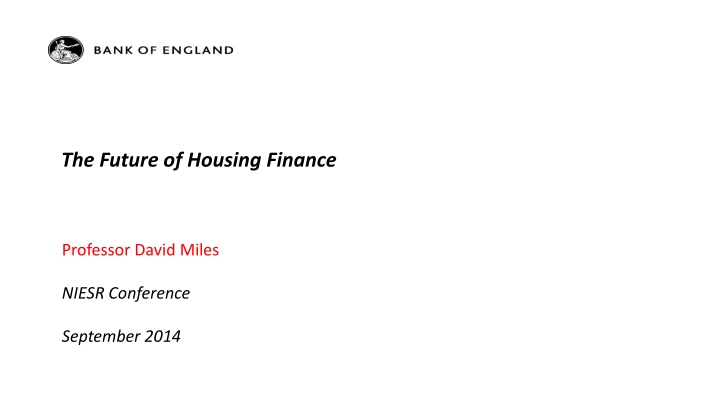
Key Insights on Housing Finance Trends and Market Dynamics
Gain valuable insights on the future of housing finance, real estate market trends, population density forecasts, international estimates of housing supply elasticity, real house prices evolution, and house price-to-income ratios. Explore data visualizations and expert analysis from prominent sources in this comprehensive overview.
Uploaded on | 0 Views
Download Presentation

Please find below an Image/Link to download the presentation.
The content on the website is provided AS IS for your information and personal use only. It may not be sold, licensed, or shared on other websites without obtaining consent from the author. If you encounter any issues during the download, it is possible that the publisher has removed the file from their server.
You are allowed to download the files provided on this website for personal or commercial use, subject to the condition that they are used lawfully. All files are the property of their respective owners.
The content on the website is provided AS IS for your information and personal use only. It may not be sold, licensed, or shared on other websites without obtaining consent from the author.
E N D
Presentation Transcript
The Future of Housing Finance Professor David Miles NIESR Conference September 2014
Instantaneous real forward rates 10 years ahead 6 5 4 3 2 1 0 1985 1987 1989 1991 1994 1996 1998 2000 2003 2005 2007 2009 2012 Source: Bank of England. Estimates derived from index-linked gilts. 2
Population density and density forecasts (medium variants) 400 350 300 Population per square km 250 200 150 100 50 0 1900 1920 1940 1960 1980 2000 2020 2040 2060 2080 2100 France Spain Germany United Kingdom Italy United States of America Sources: Liesner (1989), Mitchell (2007), United Nations, Word Bank, Bank of England calculations. Note: Pre-1950 figures are estimates based on population figures from Liesner (1989), Mitchell (2007) and land data from the World Bank for 2000. Data from 2010 are United Nations medium population variants.
International estimates of the long-run elasticity of new housing supply Source: OECD estimates, Andrews, Caldera S nchez and Johansson(2011). Note: Estimates of the long-run price elasticity of new housing supply where new supply is measured by residential investments. All elasticities are significant at least at the 10% level. In the case of Spain, restricting the sample to the period 1995-2007, which would reflect recent developments in housing markets (such as the large stock of unsold houses resulting from the construction boom starting in 2000 and peaking in 2007-09), only slightly increases the estimate of the elasticity of housing supply from 0.45 to 0.58. Estimation period early 1980s to mid 2000s.
Real house prices (index, 1971 Q1=100) 500 450 400 350 300 250 200 150 100 50 0 1970 Q2 1971 Q4 USA 1973 Q2 1974 Q4 1976 Q2 Germany 1977 Q4 1979 Q2 1980 Q4 1982 Q2 1985 Q2 1986 Q4 1988 Q2 1989 Q4 Italy 1991 Q2 1992 Q4 1994 Q2 1995 Q4 1997 Q2 2000 Q2 2001 Q4 2003 Q2 2004 Q4 2006 Q2 2007 Q4 2009 Q2 Japan 2010 Q4 1983 Q4 France 1998 Q4 Great Britain Spain Source: OECD.
House price to income ratio (index, 1980 Q1=100) 250 200 150 100 50 0 1970 Q2 USA 1971 Q4 1973 Q2 1974 Q4 1976 Q2 1977 Q4 1979 Q2 1980 Q4 1982 Q2 1983 Q4 1985 Q2 1986 Q4 1988 Q2 1989 Q4 Italy 1991 Q2 1992 Q4 1994 Q2 Great Britain 1995 Q4 1997 Q2 1998 Q4 2000 Q2 2001 Q4 2003 Q2 2004 Q4 2006 Q2 2007 Q4 2009 Q2 Japan 2010 Q4 Germany France Spain Source: OECD.
Conclusions High leverage is at the heart of problems in housing market. Monetary policy and macro prudential policy can influence leverage. But more fundamentally outside equity might be a way of permanently bringing down reliance upon debt financing. Switching 20% of funding from debt to outside equity very substantially reduces leverage. The moral hazard at that scale of outside equity funding might be low enough to make such contracts feasible. But this is a major issue. 7
